Clinker
Clinker is the backbone of cement production.
It is essentially a mix of limestone and minerals that have been heated in a kiln and have been transformed by this heat.
When limestone is converted to clinker, CO2 is released (also known as process emissions). A substantial amount of heat is needed to start and sustain the chemical reaction, leading to further CO2 emissions (also known as combustion emissions). The clinker is finely ground and mixed with gypsum and often with alternative raw materials to make cement.
Over the past decades, the cement industry has invested heavily in four main levers to reduce direct CO2 emissions:
Thermal efficiency
Cement kilns have become highly energy efficient as older plants are being upgraded or replaced.The energy intensity of cement manufacturing is influenced by regional characteristics such as raw material moisture content and burnability, fuel types, plant size distribution, and cement standards. Because of these variables, especially a higher thermal substitution rate, CEMBUREAU has projected an energy consumption of 3.300 MJ/tonne clinker by 2050.
Fuel substitution
Fossil fuels have been substituted with pre-processed waste, including biomass, of which mineral content also partially replaces primary raw materials. This increased use of alternative fuels and materials is aimed at reducing CO2 emissions linked to our thermal energy needs as well as the use of primary natural resources. Waste streams that are non-recyclable through conventional processes (such as used tyres, certain types of plastics, and chemicals) are co-processed in cement kilns in plants across Europe. By 2030, the average substitution rate could be as high as 60%. In some countries, it is already today more than 90%. This makes the European cement industry the global frontrunner in the use of alternative fuels and materials.
Clinker substitution and novel clinkers
The effort in reducing the amount of clinker in cement is progressing well and the clinker to cement ratio has been reduced to 76,4%. The uncertain sustainable availability of clinker substitutes is the main constraint. CEMBUREAU has projected the clinker to cement ratio at 70% by 2050.
Carbon Capture
The key breakthrough would be carbon capture. Since the majority of the emissions related to cement production are process emissions, the pure CO2 could be captured and stored or put to use. CO2 captured during cement production can become a raw material for new fuels, carbon fibres and chemicals or, ideally, construction materials. In fact, through the development of multiple capture technologies and its strong focus on both storage and reuse, the European cement industry is a leader in research and piloting capture breakthrough technology. However, the R&D efforts and market deployment of these technologies (if the demonstration and pilot projects prove to be successful) require significant investments and large-scale demonstrators to mobilise the value chain and ensure market acceptance and demand (without which commercial viability cannot be achieved). The cement industry will require the support of public funding for the deployment of such technologies. This could take the form of co-financing for the inception phase.
Possible breakthrough technology
- New types of clinker are being tested. • New types of clinker are being tested. They are produced at a temperature of about 1.200°C, which is roughly 250°C lower than the sintering temperature used in ordinary clinker manufacturing. The resulting process, if successful, would emit 30% less CO2.
- In Norway, the innovation project ELSE, a one-year collaborative project launched in April 2018, examines the possibility and the conditions for partially electrifying the cement production process. As a result, it should be feasible to assess if electrification of cement production is technically and economically viable. The conclusions will give insights into what potential is in the use of CO2-neutral energy in the combination with CO2 capture. Last, but not least, the project will assess whether these goals are realistic.
- CemZero is a project conducted in Sweden which looks into feasibility of electrifying cement production, focusing on the calcination process, by 2030. This could result in an emission reduction of around 5 % of Sweden’s total emissions.
How can policy help?
Encourage and facilitate increased alternative fuel use and alternative raw materials (waste co-processing in cement kilns)

- Recognise its position in the waste management hierarchy as a combination of simultaneous energy recovery and material recycling.
- Cooperate with the cement industry to develop a methodology for assessing the proportion of municipal solid waste being recycled through co-processing and thereby contributing to recycling targets.
- Ensure a level playing field among users of waste-derived fuels
- for the use of biomass waste by removing subsidies that favour one industry over another,
- in relation to GHG emissions and related carbon pricing mechanisms.
- Develop and promote sets of guidelines on alternative fuel use inspired by international best practices and to ensure operators have adequate processes in place for quality control for material acceptance, traceability, and impact monitoring.
Support the development and deployment of emerging and innovative low carbon technologies for clinker and cement production
- Ensure the cement sector is eligible for investment mechanisms that leverage private funding for low-carbon innovative technologies and through the promotion of private-public partnerships (e.g. the EU-ETS Innovation Fund).
- Develop long-term holistic policy frameworks that prevent carbon leakage. Investment security and appropriate economic frameworks are prerequisites for the deployment of innovative low-carbon technologies within the EU.
- Carbon capture and storage, and reuse (CCS/CCU)
- Coordinate regulatory frameworks for CCS/CCU internationally and cooperate with industry to significantly expand efforts to educate and inform the public and key stakeholders about carbon storage to build social acceptance.
- Support coordination and demonstration of CO2 transport networks on regional, national, and international levels to optimise infrastructure development.
- Foster international cooperation, for example through the United Nations Framework Convention on Climate Change (UNFCCC), to harmonise approaches for safe site selection, operation, maintenance, monitoring, and verification of CO2 permanent storage.
- Recognition of CCU (e.g. mineralisation) climate mitigation potential.


